- There are no more items in your cart
- Shipping Calculated at checkout
-
Sub-Total (inc. VAT)
£0.00
Need Help?
Cladding Paints
Rawlins Paints stock a diverse range of metal cladding paint and Plastisol cladding paint, along with roof paints, waterproofing masonry paints, and specialised coloured uPVC paints from the industry’s leading brands. These products are specifically formulated to extend and enhance the lifespan of cladding. Whether it’s for domestic, commercial, or industrial cladding, a properly applied coating can protect against cleaning chemicals, pressure washing, and the harsh British weather, ensuring your building remains aesthetically pleasing and structurally sound. Click for more info.
Subcategories
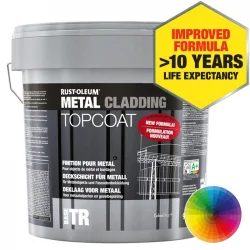
Rust-Oleum Mathys Metal Cladding Topcoat
Available in 4,100+ colours. Water-based satin gloss topcoat for metal cladding surfaces. Also for aged Plastisol in good condition. High filling and hiding power. Easy to clean and maintain. Professional use only. Buy A Paint Colour Sample
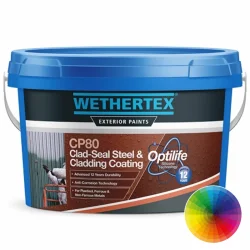
Wethertex CP80 Clad-Seal Steel & Cladding Coating
4,350+ colours for steel and cladding. Plastisol, weathered galvanised, PVF2, ferrous and non-ferrous metals, and various other substrates. Self-priming, exterior quality satin paint with high water resistance and rust protection. Quick drying with excellent adhesion and extended maintenance cycles. Environmentally friendly and chemical...
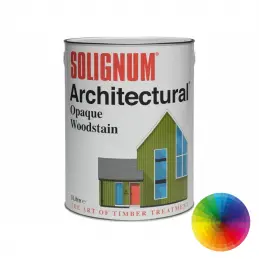
Solignum Architectural (Solvent Based)
A decorative microporous, flexible coating with 4,200+ opaque colours which allows all kinds of timber to breathe. BBA tested performance. Life expectancy in excess of 5 years. Water repellant. Suitable for use with pre-treated and pre-stained timbers. Suitable for all year round use. Touch dry in 4 hours. Please note: Solignum...
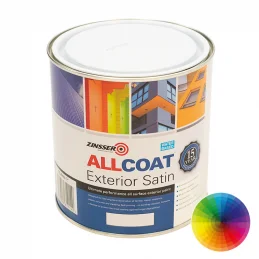
Zinsser AllCoat Exterior Satin (Water Based)
High-performance paint suitable for all exterior surfaces in 4,400+ colours. Including RAL 7016 Anthracite Grey and Chartwell Green. Perfect for use on uPVC, timber, metal, masonry and exterior brickwork, plastic (incl. composite), concrete. Also cladding, weathered bitumen, stucco, brick, stone and more. Re-coatable in just 1 hour,...
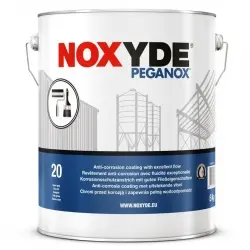
Rust-Oleum Mathys Noxyde Peganox
Water-based elastic coating available in 6 satin colours. Excellent corrosion protection and waterproofing. For use on metal roofs, cladding, structural steel, and caravans, providing protection against weathering, chemicals, and impacts. UV- and impact-resistant. Acts as both primer and topcoat. Professional use only.
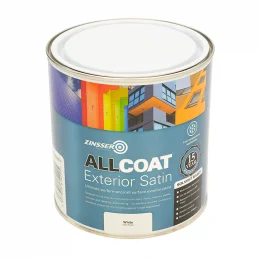
Zinsser AllCoat Exterior Satin (Solvent Based)
Ultimate performance all-surface paint in 4,400+ colours. For use on surfaces including uPVC, timber, metal, masonry, plastic, concrete, cladding and more. Multi-surface application with excellent colour retention. Weather-resistant and resistant to showers after 1 hour. Re-coatable in 3 hours and designed for long-term decoration....
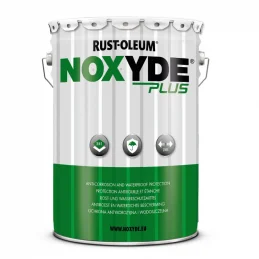
Rust-Oleum Mathys Noxyde Plus
9 colours including Anthracite Grey. Water-based elastomeric coating with superior adhesion and corrosion protection. For iron, steel, special alloys, galvanised and metallised iron and steel, aluminium, copper, zinc, and lead. 200% elastic coat. High dirt pick-up resistance. Salt spray resistance of 1248 hours. Professional use only....
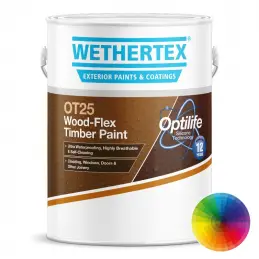
Wethertex OT25 Wood-Flex Satin Opaque Timber Paint
High-quality opaque satin finish timber paint available in 4,350+ colours. Ideal for all exterior wood and timber substrates providing up to 12 years of weather protection. Developed using advanced Optilife silicone technology for high breathability and flexibility. Quick-drying formula, suitable for application by brush, roller, or...
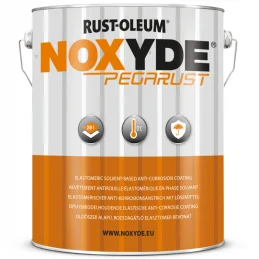
Rust-Oleum Noxyde Pegarust
Available in 7 colours including Anthracite Grey. Solvent-based flexible anti-corrosion coating. For iron, galvanised steel, aluminium, and zinc. Ultimate corrosion protection. UV- and impact-resistant. Primer and topcoat combined. Professional use only.
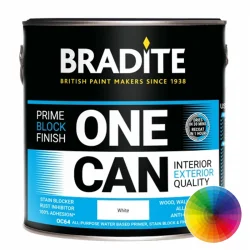
Bradite One Can Eggshell
2,500+ Colours. Quick-drying, low-odour, water-thinned primer and finish coat. Excellent adhesion, stain-blocking, and anti-corrosive properties. For ferrous and non-ferrous metals, plastics, ceramic tiles, glass, wood, and existing painted surfaces. Weather and light resistant. Please note: Colours are sold in the nearest tin size...
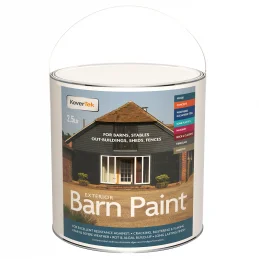
KoverTek TekTor Acrylic Barn Paint
A specially formulated water-based coating for barns, stables, outbuildings, sheds and fences. Provides a tough, flexible and durable exterior or interior finish suitable for use on a wide range of substrates. Ideal as a decorative, protective coating for most building surfaces such as Wood, Concrete, Brickwork, Rendering, Asbestos,...
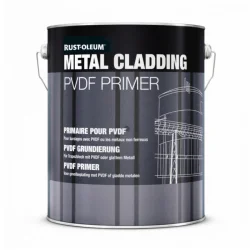
Rust-Oleum PVDF Primer
Available in matt grey. Super adhesion primer for cladding and new or aged PVDF/PVF2 surfaces. For galvanised steel, zinc, aluminium, and hard plastics. Tack-free in 30 minutes. Ideal under Mathys Metal Cladding Topcoat. Professional use only.
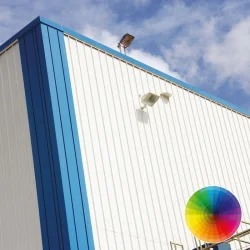
Tor Unicover S
4,800+ semi-gloss colours developed for the fast and cost effective refurbishment of architectural cladding. In many cases the system can be applied in 1 coat. It allows re-colouring for corporate re-branding or change of ownership or simply extends the life cycle of the cladding. A high build protective finish for the renovation of factory...
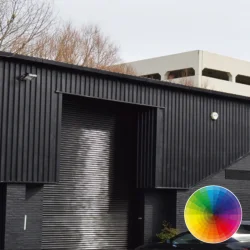
Tor Unicover W
Developed with 4,800+ colours for the fast and cost effective refurbishment of external vertical wall cladding and large internal projects. It allows re-colouring for corporate re-branding or change of ownership or simply extends the life cycle of the cladding. Water-based, extremely surface tolerant coating, ideal for application in warmer...
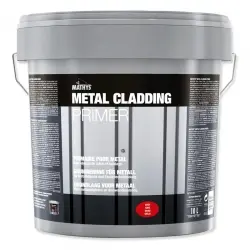
Rust-Oleum Mathys Metal Cladding Primer
Available in white, light and dark grey. For use on metal substrates including bare, blasted, galvanized, and plastisol-coated surfaces. Can be overcoated with a recommended cladding paint such as Metal Cladding Topcoat. Anti-corrosive primer. Rapid curing. Water-based and low-VOC. Overcoatable in 1 hour. Provides excellent corrosion...
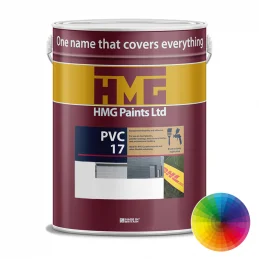
HMG PVC17 Colours
Single pack vinyl acrylic in 5,000 colours for direct application to many difficult to coat substrates including hard plastics, powder coatings, most factory finishes and architectural cladding. Also suitable for flexible substrates, PVC curtain material, uPVC, plastisol, cladding coatings and fibreglass* *for areas incorporating draught...
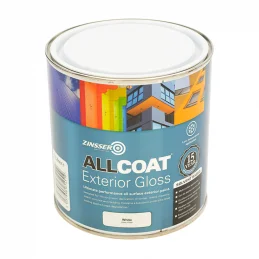
Zinsser AllCoat Exterior Gloss (Solvent Based)
The leading all weather exterior use paint. 4,400+ colours for new or previously painted wood, metal, cladding, uPVC, stucco, brick, stone, cured concrete and more. Provides excellent resistance against cracking, blistering, chalking, and flaking. Weather-resistant silicon alkyd formula protects against rain and severe weather....
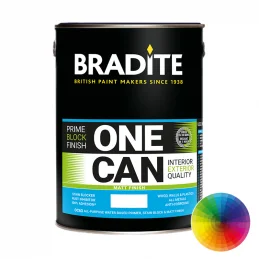
Bradite One Can Matt
2,500 Colours. Quick-drying primer and finish coat. For masonry, metals, plastics, wood, glass, ceramic tiles, and previously painted surfaces. Interior/exterior use. High adhesion, stain blocking, and anti-corrosive properties.
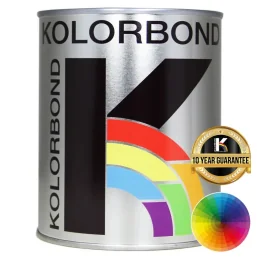
Kolorbond KolorKlad
4,900+ Colours. Thermoplastic acrylic coating. Ideal for exterior cladding such as galvanised metal, GRP, Plastisol, and PVC. Professional use only. Please note: Colours are sold in the nearest tin size but actual paint volume per tin may vary up to 10% depending on colour. Chemically bonds with the surface - 10 year guarantee....
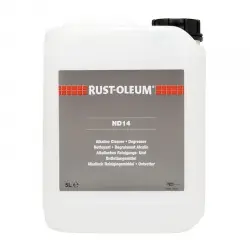
Rust-Oleum Mathys ND14 Cleaner Degreaser
Non-flammable, virtually odour-free cleaning/degreasing solution used to remove grease, oil, proteins, dirt and more from coated, mineral and steel substrates. Can be used as an additive for high pressure and steam cleaning Applied by synthetic sponge, cloth, brush or broom Low concentration (3-5% is sufficient for most cleaning)
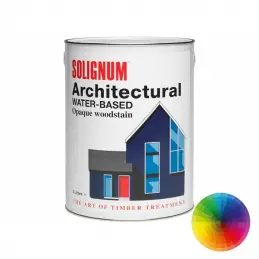
Solignum Architectural (Water Based)
An opaque, medium build, decorative, pigmented semi gloss protective wood coating suitable for finished or rough-sawn timber. Opaque finish BBA tested performance Over 5 years life expectancy Very quick drying, re-coatable within 2 hours Water repellent but allows timber to breathe Suitable for use with pre-treated and pre-stained...
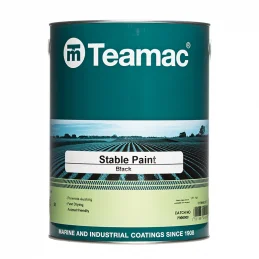
Teamac Stable Paint
In Black or White. Water-based acrylic matt paint, available in black and white. Durable and low-reflective finish. For plaster, brick, and wood surfaces. Low VOC. Washable long-lasting protection.
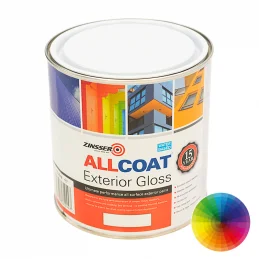
Zinsser AllCoat Exterior Gloss (Water Based)
Ultimate performance all-surface paint in 4,400+ colours. Suitable for uPVC and composite, timber, metal, masonry, plastic, concrete, cladding, and more. Offers excellent resistance to cracking, blistering, and flaking. Features a biocide to protect against fungal degradation. Self-priming and bonds to existing glossy paints without...
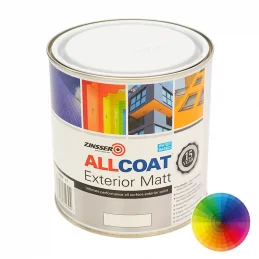
Zinsser AllCoat Exterior Matt (Water Based)
Matt All-Surface Paint in 4,400+ colours. Perfect for all exterior surfaces including uPVC, wood,metal, masonry, and more. Provides long-term decoration with excellent colour retention. Re-coatable in 1 hour, making projects quick and efficient. Low maintenance, water-shedding coating with a vapour-permeable finish. Contains a biocide...
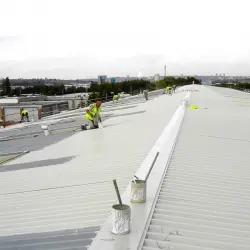
Tor Raincoat APA
Single pack coating for use in conjunction with Raincoat roof coatings and cladding finishes over PVDF and other plastic coated substrates. Adhesion promoting. Anti corrosive intermediate coating. Based on a specially modified acrylic resin system containing anti-corrosive pigments and inert extenders.
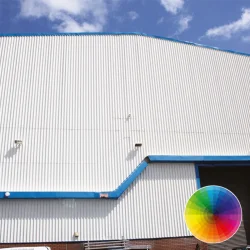
Tor Unicover Ultra S
High performance and attractive finish in 180+ colours for refurbishment, decoration and protection of weathered roof and vertical sheet cladding, profiled metal sheet roofs, roof edge trims and cappings and “Mansard” type roof edge cladding systems. Can also be used in conjunction with Tor Elastaseal™ products. Provides long term...
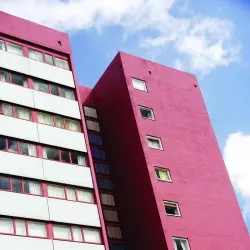
Torkill W Fungicidal Solution
Solution of an approved biocide in water, HSE Approval No 4246 for use as a masonry surface biocide for professional use against mould, fungi, moss, etc. Suitable for treatment of similarly affected roof surfaces
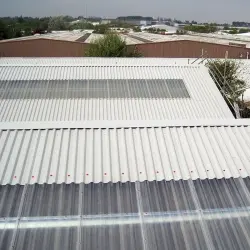
Torstrip WDA10 Wash Down Agent
A blend of surfactants, detergents and water for the washing down of previously painted and recently stripped surfaces prior to application of paint systems.
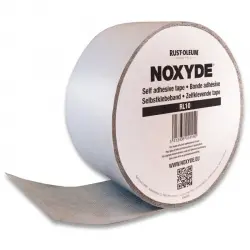
Rust-Oleum Mathys Noxyde Tape
Single pack self-adhesive butyl rubber tape. For reinforcing overlaps on metal cladding roof and wall panels. Excellent adhesive properties with high heat stability and adhesion at low temperatures. Certified with reliable performance in extreme temperatures and environmental conditions.
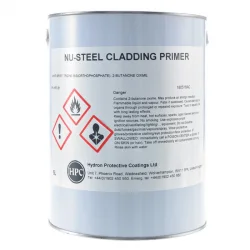
Hydron Nu-Steel Cladding Primer
Single pack, modified acrylic primer for use with Nu-Steel Cladding Paint. Specifically developed for application to Plastisol and polyester coated steel and aluminium cladding. Provides excellent resistance to UV attack. For use on properly prepared cladding and prefabricated buildings, architectural steelwork, and industrial...
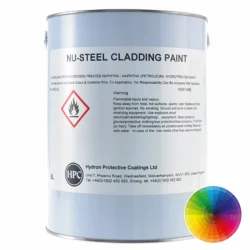
Hydron Nu-Steel Cladding Paint
Single pack, modified acrylic in 500+ colours specifically developed for application to Plastisol and polyester coated steel and aluminium cladding. Best used with Hydron Nu-Steel Cladding Primer. Provides excellent resistance to UV attack. For use on properly prepared cladding and prefabricated buildings, architectural steelwork, and...
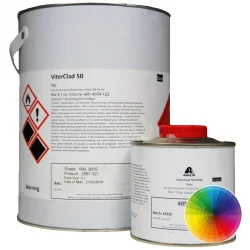
Axalta ViterClad 50 Finish
2 pack recoatable polyurethane finish in 350+ semi-gloss colours specially formulated for the maintenance and repainting of architectural cladding, especially recommended for the maintenance of Corus Colorcoat HP200 and HPS200 cladding. Expected system lifetime up to 15 years (depending on exposed environment and shade). Suitable for PVF2,...
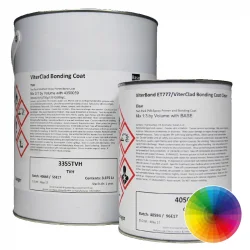
Axalta ViterClad Bonding Coat
Modified 2 pack epoxy adhesion and stabilising primer in 350+ colours, specially formulated for the maintenance and repair of architectural cladding. Recommended for the maintenance of Corus Colorcoat HP200 cladding Specially formulated for adhesion to stainless steel, carbon steel, galvanising, aluminium, copper, brass and PVF2, silicone...
Need Help?
Need Help?
Importance of Cladding Paints
Using specialist paints for cladding is crucial, as they are formulated to bond with the specific materials used in cladding. General use or multi-surface paints may not provide the necessary protection and longevity, leading to premature failure and additional maintenance costs.
Types of Cladding
Metal Cladding:
- Usage: Commonly used in industrial and commercial buildings.
- Challenges: Prone to rust and cut edge corrosion, especially in harsh environments.
- Solution: Requires specialised coatings to protect against weather and chemical damage.
Plastic/PVC Cladding:
- Usage: Often found in residential buildings and maintenance structures like modular buildings.
- Challenges: Lightweight and durable, but can fade or become brittle over time without proper maintenance.
- Solution: High-quality PVC paints to maintain appearance and durability.
Wood/Timber Cladding:
- Usage: Popular in domestic buildings for its natural aesthetic.
- Challenges: Needs regular treatment to protect against moisture, rot, and insect damage.
- Solution: Wood-specific cladding paints and treatments.
Plastisol Cladding:
- Usage: Galvalloy® or zinc coated/galvanised steel sheets with a PVC coating.
- Benefits: Extremely durable and resistant to fading, scratching, and minor defects.
- Solution: Specialist Plastisol paints to maintain its high-quality finish and provide corporate colour change.
Shapes and Designs of Cladding
Flat Panels:
- Description: Smooth, flat sheets that provide a sleek, modern look.
- Usage: Often used in contemporary commercial buildings and residential properties seeking a minimalist aesthetic.
Corrugated Sheets:
- Description: Wavy, ribbed panels that add texture and strength.
- Usage: Commonly used in industrial settings for their durability and ability to withstand harsh conditions.
Shiplap Cladding:
- Description: Overlapping boards that create a tight, weatherproof seal.
- Usage: Popular in both residential and commercial buildings, particularly for a rustic or traditional appearance.
Tongue and Groove Cladding:
- Description: Interlocking boards that fit together to form a smooth surface.
- Usage: Often used in interior and exterior applications where a seamless finish is desired.
Board and Batten:
- Description: Vertical boards with battens covering the seams.
- Usage: Common in agricultural buildings and rustic homes, providing a distinctive, country-style look.
Interlocking Panels:
- Description: Panels that click or snap together for easy installation.
- Usage: Suitable for modern, high-performance building designs, offering both aesthetic and functional benefits.
Application Methods
Proper preparation and application are key to a long-lasting cladding coating and preventing cut edge corrosion:
- Surface Preparation: Clean and remove any rust, dirt, or old paint (where necessary). This ensures the new coating adheres properly.
- Priming: Apply a suitable primer to enhance adhesion and provide an additional layer of protection (again only where necessary).
- Topcoat Application: Use a high-quality topcoat to seal and protect the surface. Consider environmental factors and weather conditions during application.
Performance of Cladding Coatings
A well-applied cladding coating can significantly extend the lifespan of the cladding by:
- Protecting against UV rays and weathering.
- Preventing rust and corrosion.
- Withstanding cleaning chemicals and pressure washing.
- Maintaining aesthetic appeal through colour retention and surface protection.
Common Misconceptions About Cladding
Cladding is often mistaken for other building elements like shutters or facade panels. Unlike these components, cladding serves both a protective and decorative function, covering the exterior walls of buildings to shield them from environmental damage while enhancing their appearance.
While cladding paint provides excellent protection against weathering, corrosion, and other factors, it does not inherently offer fire protection. Cladding paint is primarily designed to enhance the appearance and durability of the cladding material but lacks the specialised fire-resistant properties needed to prevent or slow the spread of fire. For buildings requiring fire protection, it is essential to consult with a fire safety expert for recommendations and guidance, to ensure your building meets the necessary standards for fire protection. Our Technical Team are able to help with fire protection paints, varnishes and treatments for timber cladding should this be required.
Domestic, Commercial, and Industrial Cladding
Domestic Cladding:
- Found in residential homes and buildings.
- Typically wood or plastic for aesthetic purposes.
Commercial Cladding:
- Used in office buildings, retail outlets, and sports centres.
- Often metal or Plastisol for durability and low maintenance.
Industrial Cladding:
- Common in factories, warehouses, and large industrial complexes.
- Primarily metal to withstand harsh environmental conditions and heavy use.
Cut Edge Corrosion
Cut edge corrosion occurs when the protective coating on the edges of metal cladding wears away, exposing the metal to the elements and causing rust. Specialised coatings can help in providing a solution to corroded cut edges and preventing further deterioration.
Cladding Paint FAQs
What is cladding?
Cladding is an exterior finishing system designed to protect a building from environmental elements while enhancing its appearance. Cladding can be made from various materials such as metal, wood, plastic, or composite materials. It acts as a shield against weather conditions like rain, wind, and UV rays, helping to prevent structural damage and improve energy efficiency.
What types of cladding are available?
Common types of cladding include metal, plastic/PVC, wood/timber, and Plastisol. Metal cladding is often used in industrial settings for its durability and strength. Plastic/PVC cladding is lightweight and low maintenance, making it suitable for residential use. Wood/timber cladding provides a natural look and is often used in domestic architecture. Plastisol cladding consists of a steel substrate with a PVC coating, offering excellent weather resistance and durability.
What is cut edge corrosion?
Cut edge corrosion occurs when the edges of metal cladding lose their protective coating, leading to rust and deterioration. This often happens at the cut edges of metal sheets where the protective layer has been compromised. To prevent cut edge corrosion, preemptive maintenance is essential using specialised edge sealants or coatings that can withstand exposure to the elements and provide long-lasting protection.
Can general-use paints be used on cladding?
No, general-use paints are not suitable for cladding as they do not provide the necessary adhesion and protection required for exterior applications. Specialist cladding paints are formulated to bond with the specific materials used in cladding, ensuring a durable and long-lasting finish. Using the wrong type of paint can result in peeling, flaking, and reduced protection against weathering and corrosion.
How should cladding be prepared before painting?
Proper preparation is crucial for a successful cladding paint job. The surface should be thoroughly cleaned to remove dirt, grease, and loose material. Any rust or loose and flaking old paint should be scraped off, and the surface should be sanded if necessary. Applying a suitable primer (if required) is essential to enhance adhesion and provide a suitable base for the topcoat. For best results, follow the manufacturer’s instructions for surface preparation and priming.
What is Plastisol cladding?
Plastisol cladding consists of Galvalloy® or zinc coated/galvanised steel sheets coated with PVC for enhanced durability and weather resistance. It is widely used in industrial and commercial buildings due to its excellent performance and low maintenance requirements. Plastisol cladding is resistant to fading, scratching, and minor impacts, making it a popular choice for exterior applications.
Where is cladding commonly used?
Cladding is used in a variety of settings, including domestic, commercial, and industrial buildings. In residential areas, cladding is often used to improve the appearance of homes and provide additional insulation. In commercial buildings, it enhances the aesthetic appeal and protects against weather damage. Industrial buildings use cladding for its durability, speedy installation and ability to withstand harsh environmental conditions.
How long does cladding paint last?
The longevity of cladding paint depends on the quality of the paint, the application process, and the environmental conditions. High-quality cladding paint can last up to 20 years or more, providing long-lasting protection and maintaining the appearance of the building. Some are even available with a manufacturer backed guarantee. Regular maintenance and inspections can help extend the lifespan of the paint.
What are the benefits of using cladding?
Cladding offers several benefits, including protection against weather elements, improved energy efficiency, and enhanced aesthetic appeal. It acts as a barrier against rain, wind, and UV rays, helping to prevent structural damage. Cladding can also provide additional insulation, reducing energy costs and improving the comfort of the building’s interior.
Can cladding paint be applied in any weather?
For optimal results, cladding paint should be applied in dry conditions with moderate temperatures. Extreme temperatures and high humidity can affect the curing process and the adhesion of the paint. It is best to check the weather forecast and avoid painting if rain or extreme weather conditions are expected.
What are the signs that cladding needs repainting?
Signs that cladding needs repainting include fading, cracking, peeling, and rust. Regular inspections can help identify these issues early, allowing for timely maintenance and preventing further damage. Repainting the cladding can restore its protective properties and enhance the appearance of the building.
Is cladding paint resistant to cleaning chemicals?
Specialist cladding paints are formulated to withstand cleaning chemicals and pressure washing, ensuring the longevity of the finish. Regular cleaning is essential to maintain the appearance of the cladding, and using the appropriate cleaning agents and techniques will help preserve the integrity of the paint.
Can cladding be used on residential buildings?
Yes, cladding is widely used on residential buildings for its aesthetic and protective qualities. Wood and plastic cladding are popular choices for homes, providing a stylish finish and additional insulation. Properly installed and maintained cladding can enhance the curb appeal and value of a residential property.
How does cladding differ from uPVC or metal shutters?
Cladding covers the entire exterior wall of a building, providing protection and decoration. In contrast, uPVC or metal shutters are smaller, movable panels used over windows and doors for security and privacy. Cladding serves a broader purpose, improving the overall appearance and performance of the building.
What is the best cladding paint for metal surfaces?
Rust-Oleum Mathys Metal Cladding Topcoat is a popular choice for its long-lasting and durable finish. This high-quality acrylic paint provides excellent protection against weathering and corrosion, making it ideal for metal cladding surfaces. It is available in a range of colours to match the aesthetic requirements of different buildings.
How can I prevent cut edge corrosion?
To prevent cut edge corrosion, an anti-corrosive waterproof paint can be used to seal the edges and protect against moisture and rust. Regular inspections and maintenance can help identify and address any signs of corrosion early. Using specialised edge sealants can provide additional protection and extend the lifespan of the metal cladding.
What are the common applications for Plastisol cladding?
Plastisol cladding is often used in industrial and commercial buildings due to its durability and low maintenance. It is commonly found on warehouses, factories, retail outlets, and sports centres. Plastisol cladding provides a cost effective solution to finishing a building is generally fast to install, making it a preferred choice for high-traffic and exposed areas.
How do I choose the right colour for cladding paint?
When choosing a colour for cladding paint, consider the building’s surroundings, architectural style, and any brand colours for commercial properties. Light colours can help reflect heat and keep the building cooler, while darker colours can create a bold statement. Many manufacturers offer a wide range of colour options to suit different design preferences.
Can cladding paint improve energy efficiency?
Yes, some cladding systems can provide additional insulation, improving a building’s energy efficiency. Insulated cladding can reduce heat loss in the winter and keep the building cooler in the summer, leading to lower energy costs and increased comfort. Choosing the right type of cladding paint such as Zenova IP Thermal Insulating Paint can also contribute to a more energy-efficient building.
Why is it important to use a primer on cladding?
Primers enhance the adhesion of the topcoat and provide an additional layer of protection against rust and corrosion. Using a suitable primer ensures that the topcoat adheres properly and performs well over time. It also helps to create a uniform surface for the topcoat, resulting in a professional and long-lasting finish.
Rust Protection from Metal Cladding Paints
The lifespan of metal cladding coatings can be visually observed. Metal cladding sheets rust and deteriorate from seasonal elements, cut edge corrosion, chemical cleaning agents, and possible airborne chemicals around industrial plants and factories – an example of airborne chemicals would include exhaust fumes from adjacent car-parking or delivery vehicles at loading bays, where metal cladding may be used.
Metal, plastic, and Plastisol cladding can be found at a wide range of facilities and locations away from factory sites. Many holiday and residential parks utilise cladding on their buildings and maintenance portable cabins, as well as hospitals, retail outlets, sports centres (rowing clubs, gymnasiums, training centres), and schools.
If your business has cladding, you may be looking for sustainable and long-term coating system solutions, rather than quick fix decorative remedies. Metal and Plastisol cladding is eye-catching and a huge part of a company’s aesthetic qualities for prospective customers and sales, so be sure to use the best products available to avoid corrosion and rust deteriorating the cladding’s integrity.
Plastisol Cladding Paint – PVC Coated Sheets
Plastisol sheets which are used for cladding building roofs and walls are Galvalloy® or zinc coated/galvanised steel sheets, with a PVC coating applied. This ensures longevity (usually up to 25yrs) and durability against discoloration, fading, scratching, and other minor defects.
Rawlins Paints supply a wide range of Plastisol paints and coatings, from industrial and commercial paint manufacturers, including Rust-Oleum Mathys, Tor Coatings, and Wethertex.
Tor Coatings have a name synonymous with quality and their Unicover range comprises single pack and two pack systems that can be used to decorate and protect wall and roof Plastisol clad surfaces. Tor Unicover S can be used on Plastisol cladding but is also a high-build protective finish for the renovation of factory-coated profile metal vertical cladding panels, roofing trims, etc. in moderate environmental locations. Available in an impressive range of colour options, along with many other cladding coatings, it is recommended to check the weather forecast prior to use and avoid application if rain is imminent.
Torclad Unicover Ultra S is a two-pack, high-solids aliphatic urethane pre-polymer containing light-fast pigments and inert extenders, that can be used on cladding, roofing, and steel structures. Like Tor Unicover S, it is available as a semi-gloss finish in an extremely wide range of colours – ideal for matching company and brand colours.
If you are unsure whether a listed metal cladding paint can also be used to paint Plastisol cladding, give us a call, or download the latest data sheet, which will have further technical information about the product.
Primer Cladding Paint
We stock everything you need to make sure your metal or plastic cladding is suitably maintained. Rust-Oleum PVDF Primer is a super adhesion primer for galvanised steel, zinc, and aluminium cladding and PVDF or PVF2 cladding.
Rust-Oleum Mathys Metal Cladding Primer is a water-dilutable coating specially designed for application on weathered cladding to provide a perfect base for recommended and compatible topcoats. Available in white, light or dark grey, this primer helps protect cladding from further oxidisation, cut edge corrosion, or rust.
A self-priming coating, Wethertex CP80 Clad-Seal Steel & Cladding Coating works for most metal and metal cladding surfaces. Approved for Plastisol, Wethertex CP80 can also be used on tin, aluminium, copper, zinc, and lead making it a good all-in-one coating.
Metal Cladding Coating - Topcoats
Rust-Oleum Mathys Metal Cladding Topcoat is a long-lasting acrylic paint with a semi-gloss finish. It’s designed to be long-lasting with a life expectancy of up to ten years. Mathys Metal Cladding Topcoat is specially designed to use as a metal cladding finish on top of Rust-Oleum PVDF Primer, Rust-Oleum Mathys Metal Cladding Primer, or on any metal surface that has been coated with Rust-Oleum Noxyde Peganox or Rust-Oleum Noxyde. In some cases, Mathys Topcoat can be directly applied to Plastisol wall cladding surfaces. Whichever surface it’s used on, the result is a decorative satin topcoat that is much cheaper than replacing cladding entirely to give the building a facelift.
Metal Paint for PVC Coated Cladding
Rust-Oleum Mathys Noxyde metal paints range, including Pegarust and Peganox, can be used on industrial cladding walls and roofs, protecting the surface with its anti-corrosive and anti-rust membrane, which is impermeable to water and winter elements.
Benefits:
- Excellent corrosion protection and waterproofing
- Applicable in cold temperatures down to 0°C or on damp surfaces (Pegarust)
- 200% elasticity - does not crack or peel when metal shrinks or expands
- Prevents rust from spreading
- UV resistant and protects against abrasion
- Impact resistant
- Primer and topcoat in one
- Ultimate water-based corrosion protection (Noxyde Plus)
Common Cladding Definitions
Plastisol HP200: Easily recognized by its classic ‘leathery’ surface texture, this type of cladding has been available since 1987 (previous Mk.1 and Mk.2 versions were available from 1965 and had a similar appearance).
Colorcoat HPS200: This has a ‘dimpled’ surface texture, quite different from traditional leather-grain Plastisol. This Scintilla pattern has a tiny ‘S’ impressed inside it and has been available since 1998.
PVF2, Silicone Polyester, and Powder Coating: These common types of cladding have no surface texture and are therefore easily distinguished from either type of Plastisol shown above.
For more information on cladding and cladding paints, or to find the right product for your project requirement, contact our Technical and Product Support Team for qualified and expert advice.
What Rawlins’ Customers Say:
Don’t just take our Technical Support Teams’ words for it, here’s what our customers have to say about cladding paint they have purchased from our store:
The information provided above is a basic overview and is intended as general information only. It is not advice, and is given without warranty. You should always refer to the relevant data sheets and our Technical Team prior to purchase or use of any products.
